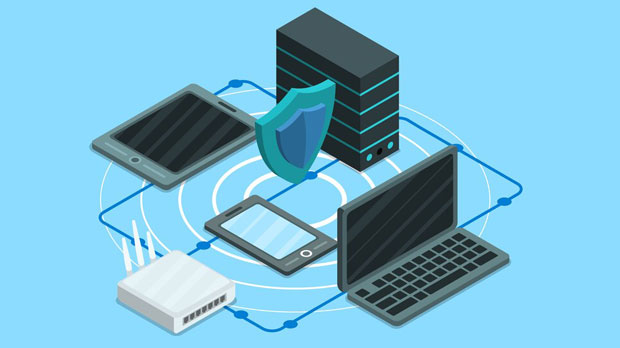Rotating residential proxy PYPROXY has emerged as a powerful tool for enhancing online privacy and circumventing geographical restrictions, providing unique benefits over traditional proxies. Unlike conventional proxies, which often use data centers or shared networks, rotating residential proxies utilize real IP addresses assigned to real users' devices, making them much harder to detect. This article explores the advantages of PyProxy, comparing it to traditional proxies, and delves into how it offers superior performance in areas such as anonymity, speed, security, and scalability. Through a detailed analysis, we will uncover why rotating residential proxies are becoming the preferred choice for businesses and individuals looking to optimize their online activities. Understanding Traditional ProxiesTraditional proxies are servers that act as intermediaries between a user's device and the internet, hiding the user's IP address and providing a degree of anonymity. These proxies can be categorized into two types: data center proxies and residential proxies. Data center proxies are hosted on servers in data centers, and while they are fast and cost-effective, they are easily detectable by websites due to their non-residential IP addresses. This makes them less reliable for activities that require high anonymity, such as web scraping, ad verification, or bypassing geo-restrictions.On the other hand, residential proxies are typically assigned to real users' devices by Internet Service Providers (ISPs). However, traditional residential proxies can still be easily identified by certain websites or services, as they usually come from a smaller pool of IPs. As a result, they may not offer the level of security or anonymity required for high-stakes applications.What is Rotating Residential Proxy PyProxy?Rotating Residential Proxy PyProxy is an advanced form of proxy technology that offers rotating IP addresses, which are assigned from a vast pool of real residential IPs. These IPs are associated with real devices, making it extremely difficult for websites or services to detect and block them. PyProxy continuously changes the IP address used for each request, ensuring that the traffic remains anonymous and difficult to track.The core advantage of PyProxy is its ability to avoid detection by websites that typically flag suspicious traffic. By using a large pool of real, geographically diverse IP addresses, PyProxy provides an extra layer of anonymity and security that traditional proxies cannot offer.Advantages of Rotating Residential Proxy PyProxy over Traditional Proxies1. Enhanced AnonymityOne of the key advantages of rotating residential proxies, like PyProxy, is their ability to provide superior anonymity. Traditional proxies, especially data center proxies, are often recognized by websites because they come from known data centers and share common characteristics. Websites can identify these proxies based on their IP address, and as a result, users may experience blocks or CAPTCHAs.PyProxy, however, uses residential IPs from real users, making it much harder for websites to differentiate between legitimate users and proxy users. The continuous rotation of IPs further adds to the difficulty of detection, ensuring that activities remain private and secure.2. Bypassing Geo-restrictionsAnother significant advantage of rotating residential proxies is their ability to bypass geo-restrictions. Many websites and services restrict access to content based on a user’s geographic location. Traditional proxies can sometimes bypass these restrictions, but they often fail when websites detect the use of proxies, especially data center proxies.With PyProxy, users can rotate through thousands of residential IPs from different regions, making it easier to access content that is geographically restricted. The ability to rotate IPs ensures that users can always appear to be located in the desired region, increasing the chances of bypassing geo-blocks without being detected.3. Avoiding IP Blocks and BansUsing traditional proxies, especially data center proxies, can often lead to IP bans or blocks. Websites and services are increasingly sophisticated in detecting and blocking proxy traffic, particularly when a single IP is used too frequently or in a way that seems suspicious.PyProxy, however, rotates through a vast pool of residential IP addresses, ensuring that each request appears to come from a different user. This makes it nearly impossible for websites to track the source of the traffic or block it effectively. By continuously rotating IPs, PyProxy prevents the accumulation of excessive requests from a single IP, reducing the risk of detection and blocking.4. Better Security and Reduced DetectionSecurity is a significant concern for many businesses and individuals using proxies for activities like data scraping or accessing restricted content. Traditional proxies are often vulnerable to detection because their traffic patterns are easily identifiable. For example, data center proxies are often used by multiple users simultaneously, which creates a noticeable pattern that websites can flag.PyProxy, by utilizing real residential IPs, provides a much higher level of security. The IPs come from real users' devices, and the traffic patterns are much more difficult to detect or flag as malicious. This makes PyProxy a more secure and reliable option for users who require high levels of protection while performing sensitive tasks online.5. Scalability and FlexibilityAnother advantage of rotating residential proxies is their scalability. Businesses that rely on large-scale data collection, ad verification, or market research often need to use hundreds or even thousands of different IP addresses. Traditional proxies can struggle to provide the necessary number of unique IPs without encountering detection or service disruptions.PyProxy offers unparalleled scalability by providing access to a massive pool of rotating residential IPs. This flexibility allows users to scale their operations as needed without worrying about IP limits or detection issues. The ability to rotate through a wide variety of IPs also makes it easier for businesses to handle large-scale operations, such as web scraping or managing ad campaigns across multiple regions.6. Cost-Effectiveness for Certain ApplicationsWhile PyProxy may appear more expensive than traditional proxies at first glance, it can actually be more cost-effective in the long run for certain applications. Traditional proxies can be subject to IP bans or restrictions, which may require businesses to continuously invest in new proxies to avoid service interruptions.In contrast, the use of rotating residential IPs from PyProxy can reduce the need for constant proxy renewal. Since PyProxy’s IPs are harder to detect and block, users are less likely to encounter the same issues with bans, making it a more reliable and cost-effective solution for long-term operations.Conclusion: Why Choose PyProxy?Rotating Residential Proxy PyProxy offers a superior alternative to traditional proxies by providing enhanced anonymity, better security, scalability, and the ability to bypass geo-restrictions. By using real residential IPs and rotating them frequently, PyProxy ensures that users can avoid detection and enjoy seamless online experiences, whether they are scraping data, accessing restricted content, or managing ad campaigns.For businesses and individuals who require a higher level of privacy, security, and flexibility, PyProxy is the ideal choice. While traditional proxies still have their place in certain scenarios, the advanced features and performance benefits of rotating residential proxies make them the preferred option for anyone looking to optimize their online activities.
Oct 26, 2025



































































